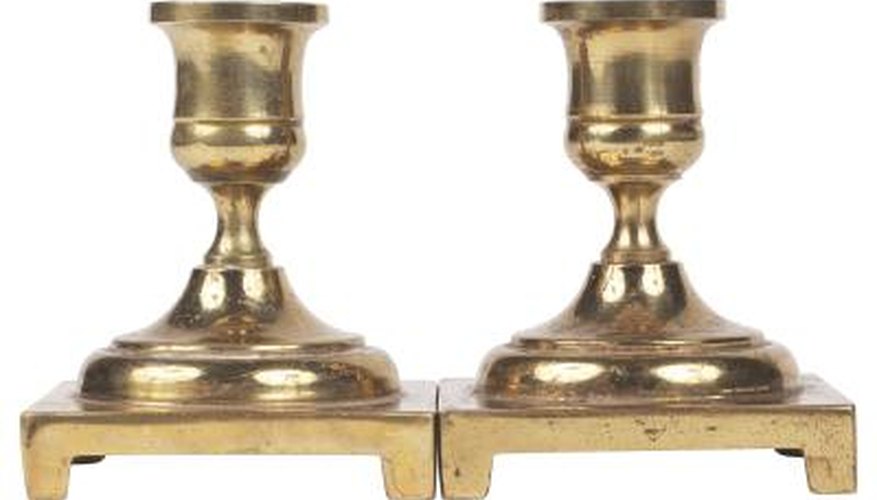Candlesticks have been used since the 16th century and possibly longer. One of the primary materials used in antique candlesticks was brass, which is made out of an alloy of copper and zinc. While some antique candlesticks are ornate and elaborate in design, others are simple and functional, and antique candlesticks of all styles can be found at many antique stores, collector shows and estate sales. There are a few ways to identify antique brass candlesticks correctly.
Look for baluster-shaped (round) brass candlesticks that have large bases and cups underneath the holders that are saucer-like in shape. These items were common in America in the 17th century onward and were commonly made in England and imported to the United States.
Examine the brass on the candlesticks. Early 19th century brass candlesticks have a thin layer of brass that is slightly rough on the inside from being cast by sand.
- Candlesticks have been used since the 16th century and possibly longer.
- Early 19th century brass candlesticks have a thin layer of brass that is slightly rough on the inside from being cast by sand.
Look inside the interior of the candlestick for a thin metal rod that has an end shaped like a button. This was meant to remove the end of a candle stub and is indicative of an authentic antique brass candlestick.
Search for brass candlesticks that have curved handles that are riveted to the large, saucer-like bases and are made from sheet brass. These candlesticks will have stems in both square and circle shapes and were commonly used in the bedroom.
Look for brass candlesticks with seven branches, which were created for use in Jewish homes for religious ceremonies. Many of these candlesticks were made in Russian shops in New York City.
